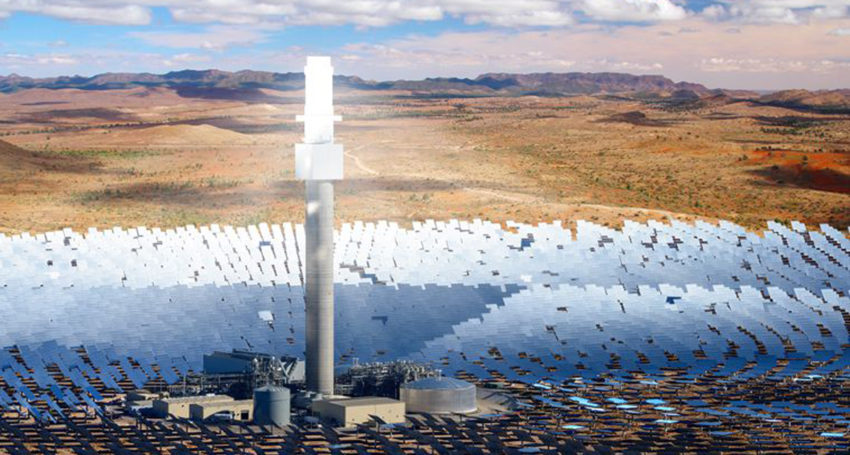The Aurora Solar Energy Project located in Port Augusta, about 300km north of the South Australian capital Adelaide, will incorporate eight hours of storage or 1100 megawatts-hours, allowing it to operate like a conventional coal or gas power station.
The $650 million plant – the biggest of its kind in the world – will have a capacity of about 135 MW under normal operating conditions with the ability to increase that output in favourable conditions.
The plant will be situated about 150km northwest of Jamestown, where Elon Musk has installed the world’s largest Lithium-ion battery at Hornsdale Wind Farm.
Aurora will deliver 495 gigawatt-hours of power annually – providing fully dispatchable baseload electricity to the network.
It will supply 100% of the South Australian Government’s electricity load from 2020, after it won a competitive tender process.
The project will also supply the broader market, enhancing competition and putting downward pressure on power prices.
In September 2016 the South Australian Government launched a tender process to procure 75% of its long-term power supply in order to attract a new competitor into the electricity market, increasing competition and putting downward pressure on power prices.
The offer from SolarReserve was the lowest-cost option of the shortlisted bids with the government paying no more than $78/MWh.
The project is a big win for the Port Augusta community, which is still recovering from the 2016 closure of a major coal-fired power station in the town.
SolarReserve CEO Kevin Smith said the development approval was an important milestone for the Aurora Solar Energy Plant.
“The remarkable story of the transition of Port Augusta from coal to renewable energy – which won a competitive tender against fossil fuel – is also a preview of the future of power generation around the world,” he said.
The project will use thousands of mirrors (heliostats) to reflect and concentrate sunlight onto a central receiver on top of a tower. The process heats molten salt, pumped to the top of the tower and flowing through the receiver, to 565 degrees Celsius.
The molten salt provides a stored heat source that is used to generate steam to drive a single turbine that generates electricity. The facility can generate power at full load for up to eight hours after sunset.
South Australia’s Acting Energy Minister Chris Picton said the approval would trigger major investment, create hundreds of jobs and put downward pressure on prices.
“This world- leading project will deliver clean, dispatchable renewable energy to supply our electrified rail, hospitals, schools and other major government buildings,” he said.
“South Australia is fast becoming a global centre for the development of renewable energy with storage, with a range of other projects set to come online over the next few years.”
Andrew Spence for The Lead.
This article was originally published on The Lead. Read the original article.
This content is protected by copyright and may not be reused. If you want to cooperate with us and would like to reuse some of our content, please contact: editors@pv-magazine.com.








By submitting this form you agree to pv magazine using your data for the purposes of publishing your comment.
Your personal data will only be disclosed or otherwise transmitted to third parties for the purposes of spam filtering or if this is necessary for technical maintenance of the website. Any other transfer to third parties will not take place unless this is justified on the basis of applicable data protection regulations or if pv magazine is legally obliged to do so.
You may revoke this consent at any time with effect for the future, in which case your personal data will be deleted immediately. Otherwise, your data will be deleted if pv magazine has processed your request or the purpose of data storage is fulfilled.
Further information on data privacy can be found in our Data Protection Policy.